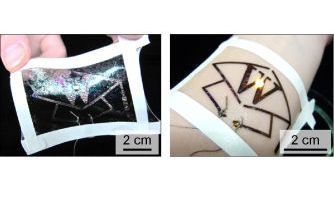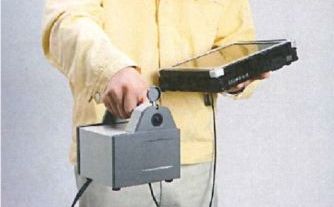show advanced search
-
61-80 / 87
- display number
-
order by date
-
order by researcher's name
-
order by affiliation
2016-0203-02
Nanotechnology / Materials
posted:2016/02/03
Electronic devices composed of polymer nanosheets
FUJIE, Toshinori Guest Researcher (retired)
collaborative researchers:IWASE, Eiji Professor (retired), TAKEOKA, Shinji Professor (retired), IWATA, Hiroyasu Professor (retired)
● Flexible electronic devices mounted on free-standing polymer nanosheets ● Fabrication of conductive lines by inkjet printing of silver nanoparticles at room temperature● Soldering-free packaging of electronic elements (e.g., LED) based on van der Waals interactions
2015-1023-05
Life sciences
posted:2015/10/23
Protein crystallization using membrane separation method
KOHORI, Fukashi Assistant Professor (Faculty of Science and Engineering School of Advanced Science and Engineering)
・ Protein solution is concentrated by using ultrafilter・ Concentration speed is controlled optionally by pressure control・ Separation and collection of proteins are very easy
2015-1023-04
Life sciences
posted:2015/10/23
Method for determining the heat treatment on meat
TAKEYAMA, Haruko Professor (Faculty of Science and Engineering School of Advanced Science and Engineering)
collaborative researchers:HOSOKAWA, Masahito Associate Professor , ANDO, Masahiro Researcher
To determine the heat treatment on meat by evaluation of heat denaturation of protein using Raman spectroscopic analysis.
2015-1022-02
Life sciences
posted:2015/10/23
High-throughput screening system with cultured cell lines
SEMBA, Kentaro Professor (Faculty of Science and Engineering School of Advanced Science and Engineering)
・ Cells are cultured in various conditions (growth factor, extracellular matrix, etc.) after retroviral induction of target genes, and evaluated by cell growth/migration/invasion and malignant transformation. ・ Optimization for 96-well culture plates enabled high-throughput ...
2015-0303-07
Nanotechnology / Materials
posted:2015/03/03
Ultra-low-loss Tapered Optical Fibers(TOFs) and Ultra-high-Q Microtoroidal Resonators
AOKI, Takao Professor (Faculty of Science and Engineering School of Advanced Science and Engineering)
・The highest transmission measured for TOFs with an optimal shape is in excess of 99.7% with a total TOF length of only 23mm・Microtoroidal resonators to build on-chip cavity QED systems with very high quality factors
2015-0303-04
Nanotechnology / Materials
posted:2015/03/03
Electroforming Technique using Self-assembled Monolayer(SAM) for Modified Nanopatterns
HOMMA, Takayuki Professor (Faculty of Science and Engineering School of Advanced Science and Engineering Department of Applied Chemistry)
collaborative researchers:SAITO, Mikiko Senior Researcher
・Electroless NiP nanoimprinting mold replicated from Self-assembled Monolayer (SAM) modified Nanopatterns ・Elaborately manufactured in nano size and complicated form
高感度コンプトンカメラ
KATAOKA, Jun Professor (Faculty of Science and Engineering School of Advanced Science and Engineering Department of Applied Physics)
高感度で容易に携帯可能なガンマ線撮影用のコンプトンカメラです。
2011-0427-01
Life sciences
posted:2014/05/21
The synthesis of high yield hydroxyaspartic acid and its use in antitumor drugs
KINO, Kuniki Professor (Faculty of Science and Engineering School of Advanced Science and Engineering Department of Applied Chemistry)
In this research seed we succeeded in synthesizing hydroxyaspartic acid, with 100% yield, through site-specific addition of hydroxyl groups to aspartic acid in few steps, by making use of the biological reactions of enzymes.
2011-0427-02
Life sciences
posted:2014/05/21
The emission of white light through enzyme hydration of 2-naphthoic acid
KINO, Kuniki Professor (Faculty of Science and Engineering School of Advanced Science and Engineering Department of Applied Chemistry)
Using cytochrome P450 (enzyme) on 2-naphthoic acid to add a hydroxyl group enables the easy, one-step synthesis of a compound that emits white light.We have also synthesized compounds that emit blue light, and there is the potential to synthesize compounds that emit a variety ...
2011-0427-03
Life sciences
posted:2014/05/21
A method of freely synthesizing hexapeptides from peptides
KINO, Kuniki Professor (Faculty of Science and Engineering School of Advanced Science and Engineering Department of Applied Chemistry)
For example, to synthesize amino acids A and B, a method of implementing biocatalysts (enzymes) enables the synthesis of specific structures only (e.g., when AA, AB, BA and BB combinations are possible, only AB may be selectively synthesized). The peptide too, gains one site-s...
2011-0906-01
Nanotechnology / Materials
posted:2014/05/21
Observing substances under a near-field optical microscope
IMURA, Kohei Professor (Faculty of Science and Engineering School of Advanced Science and Engineering)
Using a near-field optical microscope allows observation of the shape, as well as the color of substances in an estimated area of 10 to 100 microns squared.
2011-0906-02
Nanotechnology / Materials
Energy
posted:2014/05/21
The controlling of light energy with precious metal nanoparticles (plasmonic substances)
IMURA, Kohei Professor (Faculty of Science and Engineering School of Advanced Science and Engineering)
Using a near-field optical microscope allows the observation and visualization of the plasmon of plasmonic substances. Plasmonic substances demonstrate a variety of behavior through their interaction with light, the progress of which can be tracked in high time and spatial res...
2011-0906-03
Nanotechnology / Materials
Energy
posted:2014/05/21
Organic-air rechargeable batteries
OYAIZU, Kenichi Professor (Faculty of Science and Engineering School of Advanced Science and Engineering)
We developed an organic rechargeable battery that uses air for the cathode. It can be recharged in a short time (a few seconds). It’s capacity also remained almost unchanged through 500 charge-discharge cycles.An organic polymer material was used to replace the anthraquinone i...
2011-0915-01
Life sciences
posted:2014/05/21
Intracellular molecular dynamic analysis
INOUE, Takafumi Professor (Faculty of Science and Engineering School of Advanced Science and Engineering)
Using random scan two-photon excitation microscopy, we can measure the movement of intracellular molecules. In particular, the calcium ions (Ca2+) and phosphoenzymes, receptors and other proteins involved in the synapse plasticity of neurons are the target for this analysis.
2011-0922-01
Energy
posted:2014/05/21
Development of energy control techniques for the realization of a smart grid
HAYASHI, Yasuhiro Professor (Faculty of Science and Engineering School of Advanced Science and Engineering Department of Electrical Engineering and Bioscience)
Advanced methodologies will be developed through computer simulations and next-generation smart grid simulations, in order to enable total design of a suitable next-generation electrical energy supply configuration by which both of the above can be achieved continuously.
2011-0922-03
Nanotechnology / Materials
posted:2014/05/21
Development of electrode materials and electrolytes for secondary batteries
MOMMA, Toshiyuki Professor (Faculty of Science and Engineering School of Advanced Science and Engineering)
Manufacture of secondary batteries using Li2S, formed using S as a byproduct of the petroleum refining process as the positive electrodes material.
2012-1029-01
Energy
posted:2014/05/21
Synthesis of Ordered Porous Materials and Catalytic Chemical Applications
MATSUKATA, Masahiko Professor (Faculty of Science and Engineering School of Advanced Science and Engineering)
■Research on micro- and mesoporous materialsA precursor gel is once dried, and this is then crystallized in the vapor phase. The use of the DGC method allows the preparation of zeolites with structures and compositions not obtainable by the hydrothermal synthesis method. The L...
2012-1029-02
Environment
posted:2014/05/21
Research into inorganic separation membranes
MATSUKATA, Masahiko Professor (Faculty of Science and Engineering School of Advanced Science and Engineering)
■ Compared to traditional processes that make use of phase changes such as cryogenic separation, the separation process through a zeolite membrane enables energy savings. As shown in Fig. 1, zeolite has a separation function that makes use of differences in molecular size and ...
2012-1029-03
Environment
posted:2014/05/21
Development of cleaning agents for water and soil using inorganic materials
MATSUKATA, Masahiko Professor (Faculty of Science and Engineering School of Advanced Science and Engineering)
We have highly economical insolubilization technology for treating polluted soil, and water treatment technology for dealing with all toxic metals.
692
Environment
Life sciences
posted:2014/04/03
Lipolytic microorganism and method for treating wastewater containing oil and fat using the same
YUI, Hiroshi Guest Professor (Faculty of Science and Engineering Waseda Research Institute for Science and Engineering) (retired)
This invention relates to a novel microorganism that can efficiently break down fats and oils from animals and vegetables that are contained in wastewater from kitchens and other sources, as well as the enzymes that are generated by this microorganism. It is a method of treati...


















